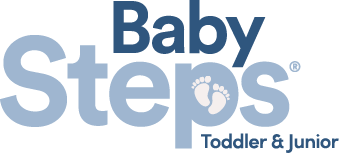Parenting is filled with milestones, but few are as emotionally complex as transitioning from breastfeeding to bottle-feeding. Whether you're returning to work, experiencing breastfeeding challenges, or making a planned switch to newborn formula, this change involves more than just swapping nipples—it’s about meeting nutritional needs, honoring emotional bonds, and often, navigating cultural expectations.
In this comprehensive guide, we’ll walk through practical strategies to make the transition smoother, introduce infant formula safely, and maintain your baby’s nutritional balance. We’ll also explore how cultural attitudes in New Zealand and China influence these decisions—and what modern parents everywhere can learn from them.
Step 1: Understand the Right Time and Method for Transitioning
Health organizations like the World Health Organization (WHO) recommend exclusive breastfeeding for the first six months of life. However, many families begin introducing bottles earlier due to personal, medical, or professional needs. The key is gradual transition.
Start by replacing one breastfeeding session per day with a bottle of expressed milk or formula. Doing this slowly gives both your baby and your body time to adjust. Look for bottle nipples that mimic breastfeeding mechanics, which can help reduce bottle refusal and ease the learning curve (Brown, 2007).
Tip: If your baby resists bottle-feeding from you, let another caregiver try when you're not in the room—this avoids confusion caused by the smell or presence of breast milk.
Step 2: Introducing Infant Formula the Right Way
Choosing a newborn formula can feel overwhelming, but rest assured that modern formulas are designed to mimic the nutritional profile of breast milk. The most commonly used formulas are cow's milk-based and iron-fortified, but soy-based or hypoallergenic versions are also available for infants with special dietary needs (O'Connor, 2009).
Here are some best practices for introducing newborn formula:
- Begin with one bottle per day to test tolerance.
- Stick to one formula for a few days before switching brands.
- Watch for signs of allergies, such as rash, vomiting, or diarrhea.
- Always prepare formula according to the instructions—mixing ratios matter!
While breast milk contains live antibodies that formula cannot replicate, formula still provides complete nutrition and supports healthy growth when used properly.
Step 3: Maintaining Nutritional Balance
The goal during this transition is to keep your baby well-nourished, growing, and developing on track. That means being aware of potential nutritional gaps and responding to your baby’s evolving needs.
Here are some nutrients to watch:
Iron: Essential for brain development. While breastfed infants may need supplementation after six months, formula-fed babies typically receive enough iron from fortified formula.
- Vitamin D: Deficiency is common. Most health authorities recommend 400 IU daily for all infants unless their formula intake exceeds one liter per day (Venter & Dean, 2008).
- Zinc, B12, and Vitamin A: Especially important for immunity and growth. These are found in most quality formulas but require attention if using non-standard or homemade formulas (González et al., 2021).
- At six months, introduce iron-rich solid foods like pureed meats, beans, and iron-fortified cereals. Complementary feeding ensures that your baby gets the full range of nutrients beyond what formula alone can offer.
Cultural Perspectives: What New Zealand and China Can Teach Us
Infant feeding practices don’t happen in a vacuum. Culture, family dynamics, and societal beliefs all shape how—and why—parents choose to transition from breastfeeding to bottles.
New Zealand promotes breastfeeding at the policy level, but cultural gaps remain:
- Mothers report feeling judged when breastfeeding in public, leading some to wean early (McBride-Henry, 2010).
- Māori and Pacific Islander mothers often face greater barriers—like limited culturally appropriate support and higher smoking rates—which contribute to shorter breastfeeding duration (Glover et al., 2009).
- Positive support from partners and grandmothers has been shown to significantly increase breastfeeding success and duration (Alianmoghaddam et al., 2018).
In China, breastfeeding initiation rates are high—but exclusive breastfeeding drops quickly, largely due to cultural and social factors:
- Traditional practices like zuo yuezi (postpartum confinement) often delay early breastfeeding and promote formula use (Lee & Brann, 2015).
- Elders and grandparents strongly influence infant feeding decisions and may pressure young mothers to supplement with formula early.
- Many young adults believe breastfeeding restricts freedom or causes undesirable body changes. Over 50% feel embarrassed by public breastfeeding (Lou et al., 2014).
The Parent’s Feeding Toolkit NZ: What You Need to Succeed
Whether you're switching to formula full-time or combining it with breast milk, keep this checklist handy:
- Start bottle-feeding gradually
- Choose the right infant formula in NZ for your baby’s needs
- Supplement key nutrients if needed
- Introduce solids around 6 months
- Create a support system—partner, family, professionals
- Challenge stigma and honor your parenting journey
Final Thoughts
Feeding your baby isn’t just a biological act—it’s a cultural, emotional, and deeply personal journey. Whether you're choosing to continue breastfeeding, supplement with infant formula NZ, or transition fully to bottle-feeding, what matters most is that your baby is fed, thriving, and loved.
References:
- Alianmoghaddam, N., Phibbs, S., & Benn, C. (2018). The impact of family culture on six months exclusive breastfeeding: A qualitative study in New Zealand. , 26, 23.
- Brown, R. (2007). Can Bottle-Feeding Really Mimic Breastfeeding?.Journal of Human Lactation, 23, 118 - 119.
- Lee, A., & Brann, L. (2015). Influence of Cultural Beliefs on Infant Feeding, Postpartum and Childcare Practices among Chinese-American Mothers in New York City. Journal of Community Health, 40, 476-483.
- Lou, Z., Zeng, G., Orme, J., Huang, L., Liu, F., Pang, X., & Kavanagh, K. (2014). Breastfeeding Knowledge, Attitudes, and Intention in a Sample of Undergraduate Students in Mainland China. Journal of Human Lactation, 30, 331 - 339.
-
O'Connor, N. (2009). Infant formula.. American family physician, 79 7, 565-70 .
Venter, C., & Dean, T. (2008). Caring for the newborn: infant nutrition part 1. The British Journal of Midwifery, 16, 726-733.
